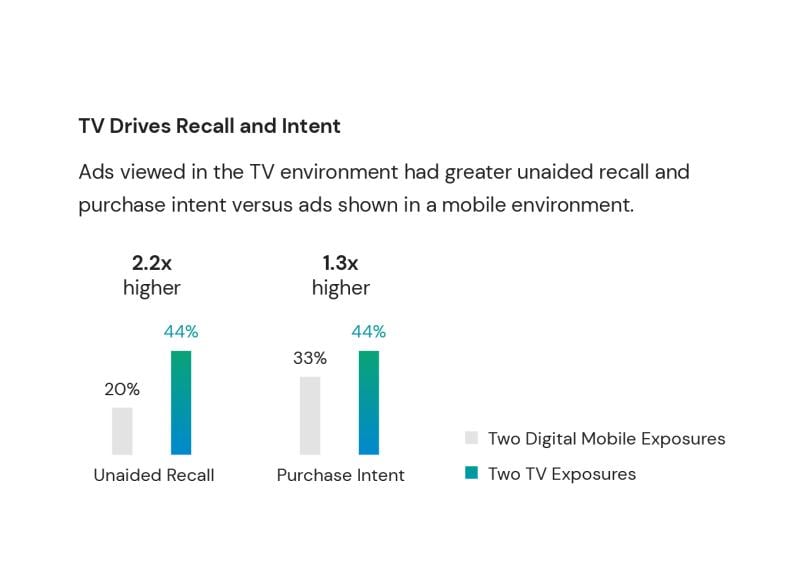As advertising expands into the streaming space, companies want to know what kinds of ads keep audiences engaged. According to Comcast Advertising, viewers are more likely to remember ads they saw on TV than those on mobile.
Comcast Advertising and MediaScience found unaided recall – how well a consumer remembers an ad without external help – was 2.2x higher for ads viewed in a big screen TV environment compared to the same ads on digital mobile platforms. Purchase intent for TV ads was 1.3x higher than that of mobile.
TV ads also help digital ads gain more traction. Viewers exposed to both TV and digital ads were 40% more likely to recall the brand than if they saw that ad twice on mobile.

For the study, Comcast and MediaScience worked with 188 participants to determine how different types of ad exposure impact memory. Viewers were shown 30-second ads in a mixture of environments.
First, they saw two ads in mobile digital platforms, such as in-feed ads found on YouTube and Facebook. Then, viewers watched two ads from TV environments (including both traditional TV and streaming) as well as a combination of the two types.
Participants in the study were exposed to an even mix of well-known and unknown brands.
James Rooke, president of Comcast Advertising, noted TV ads are uniquely capable of impacting memory.
“This research validates TV’s memorability, proving ads viewed in the long-form, lean-back TV environment have greater unaided recall and purchase intent versus the same ads shown in a short-form, small-screen digital mobile feed,” he stated.
Connected TV particularly is evolving in the advertising space. Recent data from Innovid highlighted interactive CTV campaigns – where consumers can directly engage with the ad – perform better than those same ad campaigns on mobile and PC.
Comcast suggests consumers find TV ads more compelling because full screen TV viewing offers fewer potential distractions than the digital mobile experience. Study participants watched 71% of a TV ad, while only watching 30% of that ad on mobile.
Additionally, Comcast and MediaScience compared emotional impact between TV and mobile ads. Consumers who had never seen a brand before had a higher neurometric intensity, or emotional response, when they saw the ad first on TV before digital, versus if they saw that ad twice on mobile.
Meaning those consumers are more likely to emotionally connect to a brand they’re seeing for the first time. NBCUniversal is also looking into how emotion affects ad measurement. NBCU’s Kelly Abcarian told Fierce Video in June understanding emotion is critical for advertisers, as those connections can have “tangible benefits for brands.”
Political ads are another example of ads that garner attention. TVision last month unveiled viewers are 22% more likely to stick around and watch political ads than other ads on TV.
Comcast continues to enhance its advertising arsenal. FreeWheel in September integrated Comscore audience data to its demand-side platform, so that marketers can improve their contextual targeted advertising.